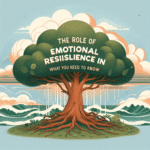
Introduction
Imagine a world where victims of crime feel empowered and supported by a justice system that truly understands their needs. This isn’t just a dream—it’s a crucial goal of victimology, particularly the concept of "Victimology: Bridging the Gap Between Victims and Justice Systems." Victimology is the study of victims and their interactions with the legal system. While many focus on criminal behavior itself, victimology shifts the focus to the experience and perspective of the victim—a lens through which we can better understand the complexities of justice. This article delves into the importance of bridging the gap between victims and the justice system, exploring how effective communication, awareness, and support can enhance the overall experience for victims.
Understanding Victimology
The Roots of Victimology
Victimology has evolved significantly since its inception in the 20th century. Originally considered a derivative of criminology, it has grown into a distinct discipline. It encompasses various aspects, including the psychological effects of victimization, societal responses to victims, and the interaction between victims, offenders, and the justice system.
The backbone of victimology is its commitment to giving a voice to those who have suffered. Here’s a brief overview of its historical evolution:
| Year | Milestone in Victimology | Description |
|---|---|---|
| 1940s | Emergence of the victim’s perspective | Early studies began to focus on victim experiences. |
| 1970s | Establishment of victim assistance programs | Services began to be offered to support victims. |
| 1980s | Recognition of victims’ rights | Advocacy for legal rights for victims gained momentum. |
| 2000s | Integration of victimology in legal frameworks | More jurisdictions began to adopt victim-centered laws. |
Key Concepts in Victimology
- Victimization – This term refers to the process through which individuals become victims of crime.
- Re-victimization – A crucial area of study, where victims endure further victimization, often by the legal system or society.
- Restorative justice – This model emphasizes repairing the harm caused by criminal behavior through cooperative processes involving all stakeholders.
By understanding these concepts, stakeholders can better advocate for and implement solutions that effectively bridge the gap between victims and the justice system.
The Justice System’s Perception of Victims
Historical Overview
Historically, the justice system has been primarily focused on the offender, often sidelining the needs and experiences of victims. This offender-centric approach has contributed to a lack of empathy and understanding from legal professionals regarding the consequences faced by victims.
The Consequences of Marginalization
When victims are not prioritized within the justice system, the effects can be devastating. Victims often face:
- Psychological Trauma: Anxiety, depression, and post-traumatic stress are prevalent among victims who feel ignored.
- Diminished Trust: Lack of communication can lead to a complete distrust of the legal system.
- Poor Recovery Outcomes: Without proper support, victims struggle to reclaim their lives and can experience ongoing challenges.
Bridging the Gap: Effective Communication
The Role of Victim Advocacy Programs
A vital component of "Victimology: Bridging the Gap Between Victims and Justice Systems" is the implementation of victim advocacy programs. These initiatives serve as a bridge, connecting victims with the resources they need.
Case Study: The New York City Victims Services Program
In New York City, the Victims Services Program offers various resources, including counseling and legal assistance. An analysis of this program shows:
- Higher Satisfaction Rates: 80% of participating victims reported feeling more empowered.
- Increased Reporting: The program saw a 30% increase in victims willing to report crimes.
- Community Trust: Strengthened community ties through outreach initiatives.
Educational Workshops for Legal Professionals
Training legal professionals in victimology is essential to creating a more empathetic justice system. Educational workshops can focus on:
- Understanding trauma and its implications on victims.
- Active listening skills to ensure victims feel heard.
- Cultural sensitivities to respect the diverse backgrounds of victims.
Support Systems for Victims
Medical and Psychological Support
Victims often need support beyond the legal realm. Integrating medical and psychological care into victim assistance programs provides a holistic approach to recovery.
Case Study: The Healing Circles Initiative
This initiative in Los Angeles created safe spaces for victims to share their stories while receiving mental health support. Outcomes included:
- Improved Mental Health: Participants reported a 50% decrease in anxiety symptoms.
- Increased Community Engagement: Those involved became advocates for others, fostering a sense of belonging.
Economic Assistance and Legal Representation
Financial constraints can hinder victims from pursuing justice. Providing economic assistance, along with accessible legal representation, addresses these barriers.
Table: Financial Barriers Faced by Victims
| Type of Financial Barrier | Percentage of Victims Affected |
|---|---|
| Lost Wages | 60% |
| Medical Expenses | 45% |
| Legal Fees | 55% |
| Counseling Costs | 40% |
Innovative Approaches in Victimology
Technology as a Tool for Support
Emerging technologies, such as mobile apps for reporting crimes and accessing support resources, can significantly improve the victim experience.
Alternative Dispute Resolution (ADR)
ADR focuses on mediation and negotiation, allowing victims to feel empowered in resolving their cases outside the courtroom.
Conclusion
Victimology is more than a field of study; it’s a pathway toward healing and empowerment. By implementing effective communication strategies, comprehensive support systems, and innovative approaches, we can bridge the gap between victims and justice systems, creating a safer and more empathetic world.
The journey to justice starts with understanding, and it is our responsibility to ensure that victims are heard, valued, and supported. Together, we can make a difference, paving the way for a justice system that truly serves all its citizens.
FAQs
1. What is the main goal of victimology?
The main goal of victimology is to understand the experiences of victims and advocate for their rights and needs within the justice system.
2. How can victims be better supported by the justice system?
Investing in victim advocacy programs, offering psychological support, and enhancing communication with legal professionals are crucial steps.
3. What is restorative justice?
Restorative justice is an approach that emphasizes repairing the harm caused by criminal behavior through cooperative processes involving all stakeholders, including victims.
4. Why is training legal professionals important in victimology?
Training helps increase empathy and understanding toward victims, ultimately improving their experiences within the justice system.
5. How can technology improve victim support?
Technology can facilitate ease of reporting crimes, provide access to resources, and enhance communication between victims and support services.
By focusing on "Victimology: Bridging the Gap Between Victims and Justice Systems," we take essential steps toward creating a more inclusive and supportive environment for those affected by crime. It is imperative that we recognize the importance of victims and advocate for systemic change that places their needs at the forefront.















